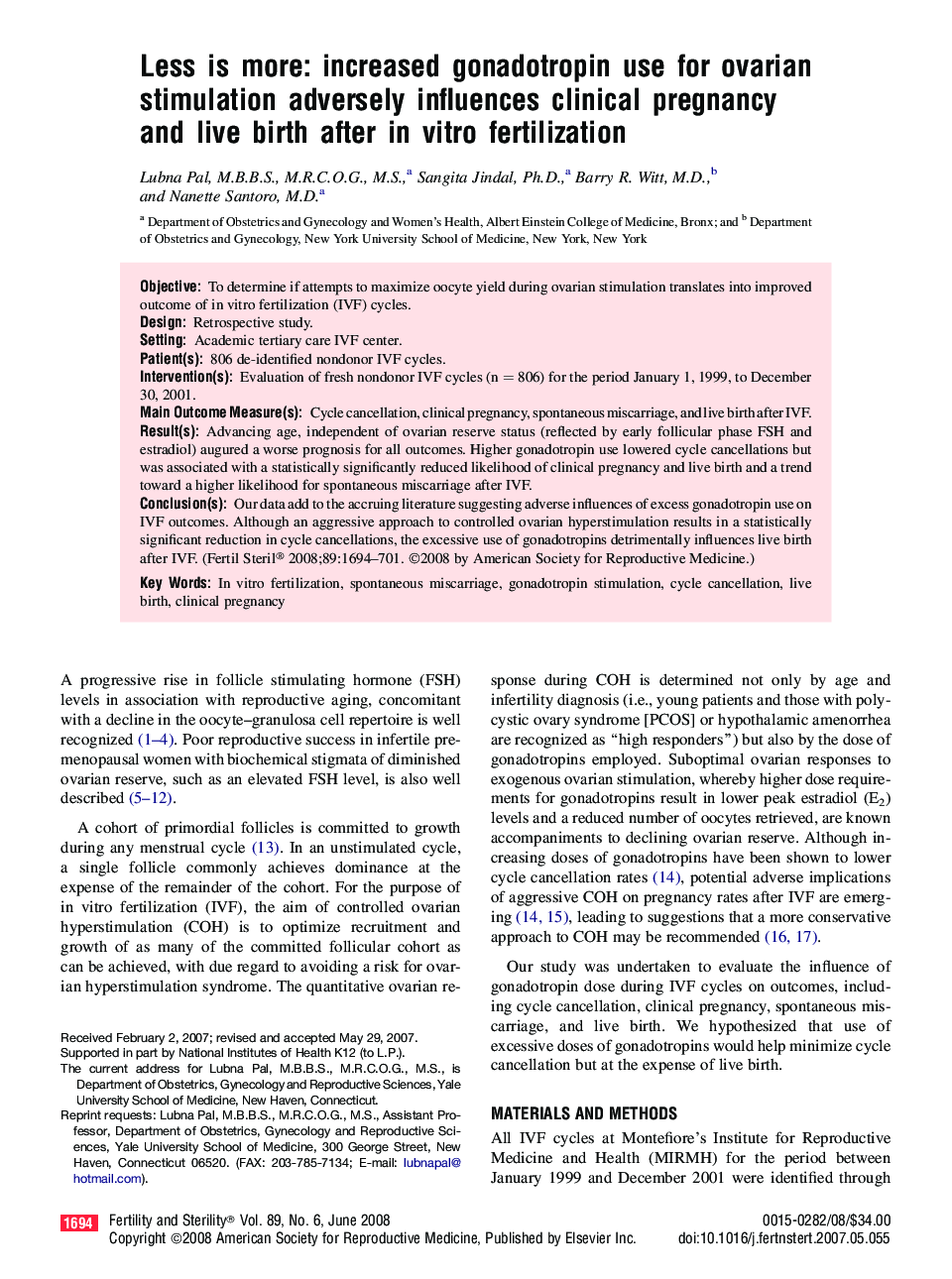| Article ID | Journal | Published Year | Pages | File Type |
|---|---|---|---|---|
| 3939199 | Fertility and Sterility | 2008 | 8 Pages |
ObjectiveTo determine if attempts to maximize oocyte yield during ovarian stimulation translates into improved outcome of in vitro fertilization (IVF) cycles.DesignRetrospective study.SettingAcademic tertiary care IVF center.Patient(s)806 de-identified nondonor IVF cycles.Intervention(s)Evaluation of fresh nondonor IVF cycles (n = 806) for the period January 1, 1999, to December 30, 2001.Main Outcome Measure(s)Cycle cancellation, clinical pregnancy, spontaneous miscarriage, and live birth after IVF.Result(s)Advancing age, independent of ovarian reserve status (reflected by early follicular phase FSH and estradiol) augured a worse prognosis for all outcomes. Higher gonadotropin use lowered cycle cancellations but was associated with a statistically significantly reduced likelihood of clinical pregnancy and live birth and a trend toward a higher likelihood for spontaneous miscarriage after IVF.Conclusion(s)Our data add to the accruing literature suggesting adverse influences of excess gonadotropin use on IVF outcomes. Although an aggressive approach to controlled ovarian hyperstimulation results in a statistically significant reduction in cycle cancellations, the excessive use of gonadotropins detrimentally influences live birth after IVF.
